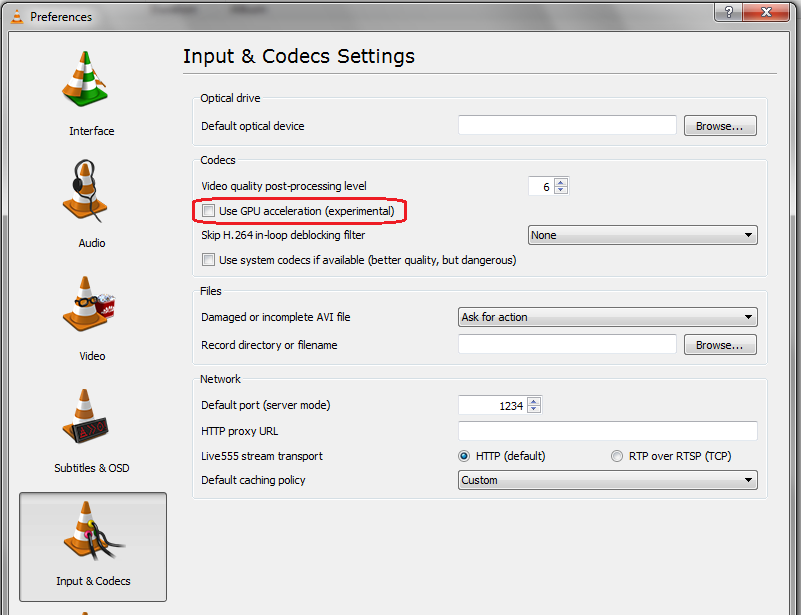Difference between revisions of "VLC GPU Decoding"
(→ATI) |
|||
| Line 44: | Line 44: | ||
Then, you are required to use a GPU supporting [http://en.wikipedia.org/wiki/Unified_Video_Decoder Unified Video Decoder]. | Then, you are required to use a GPU supporting [http://en.wikipedia.org/wiki/Unified_Video_Decoder Unified Video Decoder]. | ||
| − | We believe you need a [http://en.wikipedia.org/wiki/Unified_Video_Decoder#UVD_enabled_GPUs GPU supporting UVD2], like HD4xxx, 5xxx or 3200. One might have success with UVD+ GPU, like some HD 3xxx, but this isn't tested. | + | We believe you need a [http://en.wikipedia.org/wiki/Unified_Video_Decoder#UVD_enabled_GPUs GPU supporting UVD2], like HD4xxx, 5xxx, 6xxx or 3200. One might have success with UVD+ GPU, like some HD 3xxx, but this isn't tested. |
=== Intel === | === Intel === | ||
Latest Intel GMA should work. | Latest Intel GMA should work. | ||
Revision as of 16:07, 14 August 2012
Contents
Introduction to GPU decoding in VLC
The VLC media player framework can use your graphic card (aka GPU) to decode H.264 streams (wrongly called HD videos) under certain circumstances.
VLC, in its modular approach and its transcoding/streaming capabilities, does decoding in GPU at the decoding stage only and then gets the data back to go to the other stages (streaming, filtering or plug any video output after that).
What that means is that, compared to some other implementation, GPU decoding in VLC can be slower because it needs to get the data back from the GPU. But you can plug ANY video output (sink) to it and use all the VLC video filters.
Operating System support
Windows
VLC 1.1 supports DxVA in its version 2.0. That means that Windows Vista, Windows 2008 or Windows 7 are required. If you are using Windows XP, VLC cannot work for you yet.
Linux
On Linux, there is code for VDPAU and VAAPI. There is also some code for a VAAPI video output, that isn't merged in the current Git.
Read VLC_VAAPI and [thresh's blog|http://strangestone.livejournal.com/107092.html] for more details.
Mac OS X
Mac OS X (X.6.3) provides a new API for decoding in GPU. This is activated in Vlc 2.1. Testing is welcome.
Activation
To activate such a functionnality, use the VLC preferences.

Requirements for Windows DxVA2 in VLC
To check your DxVA compatibility, please download DxVA Checker
Graphic card compatibility on Windows
nVidia
For nVidia GPU, you are required to use a GPU supporting PureVideo in its 2nd generation (VP2 or newer), which means that you need a GeForce 8, GeForce 9 (advised), GeForce 200 or newer.
We recommend strongly VP3 or VP4 GPU.
To be sure, check your GPU against this table on wikipedia and check if you are VP2 or newer.
ATI
For ATI GPUs, you NEED Catalyst 10.7, that is just out.
Then, you are required to use a GPU supporting Unified Video Decoder.
We believe you need a GPU supporting UVD2, like HD4xxx, 5xxx, 6xxx or 3200. One might have success with UVD+ GPU, like some HD 3xxx, but this isn't tested.
Intel
Latest Intel GMA should work.